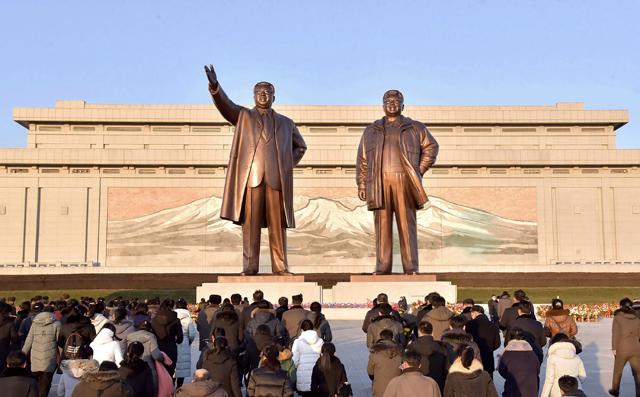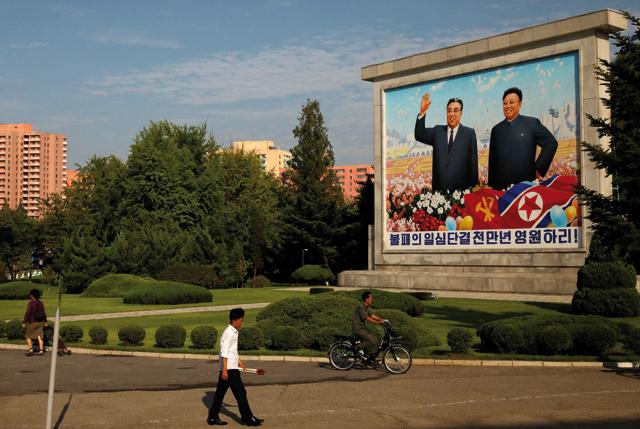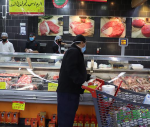You are here
Kim’s first decade: 3 US meetings, 2 dead relatives, 1 nuclear arsenal
Dec 18,2021 - Last updated at Dec 18,2021

This photo taken on Friday and released from North Korea’s official Korean Central News Agency (KCNA) shows people bowing as they pay their respects before the statues of late North Korean leaders Kim Il -sung and Kim Jong-il, to mark tenth anniversary of the death of Kim Jong- il, the father of current leader Kim Jong-un, at the Mansu Hill in Pyongyang (AFP photo)
By Sunghee Hwang
Agence France-Presse
SEOUL — After 10 years in power, North Korea’s once youthful Kim Jong-un is now one of the world’s more experienced leaders, and will look to defy the West for decades to come with his nuclear arsenal, analysts say.
Unlike most of his counterparts, with no concerns over elections or term limits and age on his side — he is only in his late 30s — Kim can expect to remain in office for decades, as long as his health holds up.
It is a far different perspective to a democratic politician worrying about headlines every day, and Kim already has more experience in power than most heads of state he will deal with in the future.
The arc of his first 10 years points to the trajectory to come, analysts say, from isolation to nuclear development to sharing the diplomatic stage with the world’s most powerful leaders.
“North Korea will maintain its confrontational status with the United States and harass it by tactically challenging it while making sure it doesn’t cross the line to completely derail its relations,” Kim Jin-ha, researcher at the Korea Institute for National Unification, told AFP.
For more than six years after inheriting power when his father and predecessor Kim Jong-il died on December 17, 2011, Kim did not leave his isolated country or meet any foreign heads of state.
Initially seen by some as a figurehead for North Korea’s generals and Workers’ Party bureaucrats, he brutally established his authority, executing his uncle by marriage Jang Song-thaek for treason.
He was also accused of the assassination at Kuala Lumpur airport of his elder half-brother Kim Jong -nam with a nerve agent.
At the same time, Kim oversaw rapid progress in North Korea’s banned weapons programmes.
He conducted four of its six nuclear tests and the 2017 launches of ballistic missiles that can reach the whole of the US mainland, defying increasingly severe UN Security Council sanctions along the way.
For months, he traded fiery rhetoric with then US president Donald Trump, raising fears of an armed conflict on the Korean Peninsula.
Then he declared the country’s nuclear arsenal “complete” and came knocking on the door of the outside world.
‘Fortuitous alignment’
With the assistance of dovish South Korean President Moon Jae-in, in 2018 Kim became the first North Korean leader ever to meet a sitting US president at a headline-grabbing Singapore summit.
Soo Kim, an analyst at the RAND Corporation, said Pyongyang’s nuclear arsenal was largely what made the encounter possible.
“North Korea’s development of its weapons programme, the credibility of the nuclear and missile threat, and the fortuitous alignment of leadership — Trump, Moon, and Kim — helped prime the conditions,” she said.
With just one meeting, the chubby young leader charmed the American businessman and reality TV host — some 40 years his senior.
Trump boasted of forming a “special bond”, even “love”, with someone he had once mocked as “little rocket man”.
The same year, Kim chatted in the woods with the Moon and had several meetings with Xi Jinping of China — North Korea’s primary backer.
“The effect was tantalising,” said Sung-yoon Lee, professor of Korean Studies at Tufts University.
“The cruel, funny-looking dictator had transformed himself into a reform-minded, peace-prone, responsible steward of nukes and gulags perhaps amenable to denuclearisation.”
The amicable mood was short-lived: a second Trump-Kim summit in Hanoi collapsed over sanctions relief and what Pyongyang would be willing to give up in return.
Trump quickly flew out of the Vietnamese capital and Kim took a 60-hour train ride back home empty-handed.
A follow-up meeting in the Demilitarised Zone that divides the Korean Peninsula did nothing to break the deadlock.
‘Common adversary’
North Korea’s dynastic regime and the ruling Workers’ Party base their claim to a right to rule on nationalism, from asserting responsibility for the end of Japanese colonialism after World War II, to “winning” the 1950-53 Korean War, to defying the United States ever since.
Officials and analysts say Kim never intended to fully give up his nuclear arsenal, which North Korea has pursued for decades at vast cost in resources and isolation, and is still developing further.
“He can’t feed the people, but he’s able to maintain his regime’s political survivability” with his weapons, said Soo Kim of RAND Corporation. “And this is more important to Kim.”
And with the United States set for long-term tensions with China, Kim will have an opportunity to follow the example of his grandfather Kim Il-sung.
North Korea’s founder adeptly exploited Cold War tensions between Moscow and Beijing to play one Communist state off against another.
The ties between Pyongyang and Beijing — forged in the Korean War when their forces fought South Korea and a US-led UN coalition to a standstill — were “a love-hate relationship between two ‘frenemies’”, said Professor Lee of Tufts University.
“Neither adores the other, but recognises that the other is its closest ally in terms of strategy, ideology, history, and in taming the US, the common adversary.”
‘Considerable success’
Kim has only to look across the border to China to see how increasing prosperity over many years can bolster the popularity of a one-party state.
But — to Beijing’s frustration — while North Korea has acquired bombs and missiles, its state-led economy has been mismanaged for decades, even before sanctions, and its people suffer chronic food shortages.
With a vulnerable health system, last year it closed its borders after the coronavirus emerged in neighbouring China.
The self-imposed blockade remains in place, and while Pyongyang insists it has yet to see any cases of the disease — analysts doubt the claim — Kim has admitted resulting hardships and warned his people to prepare for the “worst-ever situation”.
“Economically, North Korea is at the very bottom in the international order,” said Park Won-gon, professor of North Korean studies at EwhaWomans University in Seoul.
“But with its nuclear arsenal, it is able to exercise its influence between two world powers, the United States and China,” he added.
“I’d call that a considerable success on Pyongyang’s part.”
Related Articles
BEIJING - China appreciates North Korea’s “important efforts” to ease tension on the Korean peninsula, senior Chinese diplomat Wang Yi told
SEOUL/WASHINGTON — North Korea's Kim Jong-un has given his first time line for denuclearisation, aiming for the end of US President Donald T
SINGAPORE — US President Donald Trump said North Korean leader Kim Jong -un pledged at a historic summit on Tuesday to move towards complete

















